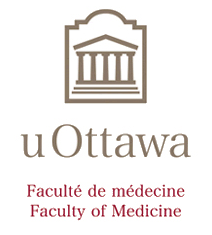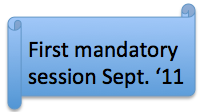


Theme
7JJ The Teacher
INSTITUTION
University of Ottawa, Faculty of Medicine
Understanding the structure and functioning of the environment into which a new faculty member is entering may enhance that individual’s job satisfaction and academic productivity. Exposure to some basic faculty development in teaching skills during orientation sessions helps ensure a minimum faculty standard of teaching. Attendance at orientation day, which covers the above, traditionally depended on the level of interest of new faculty members. It was observed that many new faculty members did not attend the annual orientation day despite being invited.
The Faculty of Medicine at the University of Ottawa decided to make orientation day mandatory starting with the 2011/2012 academic year. Since then, the annual invitations to all new faculty members have stated this policy, requiring attendance at one of three dates for the same orientation day each academic year (September to June). Percentage of new faculty members receiving orientation to the number invited for each of the 2 years before and after orientation became mandatory were compared.
Making orientation mandatory does increase attendance but other factors need to be considered to ensure it is optimal.

|
Number new faculty members (Lecturers and Assistant/Associate/Full Professors) |
Number of attendees at next year’s orientation
|
Percentage of attendees to new faculty members
|
|
August ‘08 to July ‘09 = 91 |
44 |
48% |
|
August ‘09 to July ‘10 = 124 |
24 |
19% |
|
August ‘10 to July ‘11 = 113
|
103 |
91% |
|
August ‘11 to July ‘12 = 119 |
72 |
61% |
Although the percentage of attendees in the 2 year period after orientation was made mandatory more than doubled the percentage of attendees in the preceding 2 years, it was still below the desired level of 100%. Other factors to consider include:
- convenience of attendance (frequency, duration, location of orientation days)
- how faculty are informed of orientation (frequency, venue, and source)
- the culture of the environment (attitude in the immediate working environment especially of department chairs, as well as attitude in the faculty including consequences for lack of attendance)

 Send Email
Send Email